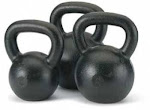Tuesday, December 6, 2011
Z
Tired
Pain is good...sometimes
Monday, December 5, 2011
1st Training session of the day
Nice
Todays Warmup
Good to go
Thursday, November 24, 2011
Another good leg blaster!
Rest 1 min between sets and then hit 1 long drop set. aim to keep the tempo and do as many reps as possible before dropping the weight. aim for 4 drops in weight. After that stay in the bottom position and hit 10-12 short 6inch pulses.
Rest 1min and then hit 1 set of walking lunges aiming for 2mins of walking with 9kg dumbells.
Rest 1min and then rep out with a 401 tempo on the leg press. aim for 130kg and at least 2minutes worth of reps. Don't bother to count, just keep going.
Try it!
Scottie
Shamelessly lifted from the Superb blog of Eric Cressey. Enjoy!
This past weekend, Mike Reinold and I presented our Functional Stability Training seminar to an audience of about 60 people at Cressey Performance. The entire seminar was videotaped and should be available sometime in early 2012. In the meantime, though, I wanted to touch on a topic we covered collaboratively: how to categorize various core stability exercises and incorporate them into your strength and conditioning programs.
Both Mike and I are in agreement that your four general categories are anterior core stability, posterior core stability, lateral core stability, and rotary core stability.
Anterior core stability exercises teach the body to resist excessive lumbar spine extension, and encompass a variety of drills, starting with dead bug, curl-up, and prone bridging activities. In prepared individuals, they progress all the way up through more advanced exercises like reverse crunches, stability ball rollouts, and TRX flutters and fallouts.
Posterior core stability exercises are designed to train the body to resist excessive lumbar spine flexion. Your drills may include everything from the birddog all the way up through more conventional strength training exercises like deadlift variations.
Lateral core stability exercises teach you how to resist lateral flexion; in other words, your goal is to avoid tipping over. These drills may start with basic side bridging drills and progress all the way up through more advanced TRX drills and 1-arm carrying variations.
Rotary core stability exercises educate folks on how to resist excessive rotation through the lumbar spine. Examples include drills like landmines, lifts, and chops.
To be candid, this classification of core stability exercises isn’t anything new to those of you who have been paying attention over the past few years. However, introducing these categories really wasn’t my intention in this blog; rather, I had three key points I wanted to highlight:
1. It’s not just what you do; it’s how you do it.
You may be able to hold a prone bridge for 25 minutes, but if you’re doing so in terrible positioning and just relying on your hip flexors and lumbar erectors to do the work, you’re doing more harm than good. You’d be amazed at how many high level athletes can’t do a simple prone or side bridge correctly.
2. A core stability exercise rarely fits into one category, especially when you add progressions to it beyond the initial stages.
Take a kettlebell crosswalk, for instance.
In this exercise, you have different loads in each hand, which makes it a lateral core stability exercise. With each step, the athlete goes into single-leg stance, which makes it a rotary core stability exercise. With the load in the bottom hand, there is a tendency to be pulled into flexion, so you have a posterior core stability exercise. Finally, with the arm overhead, one must prevent the rib cage from flying up and allowing the arm to fall backward, so you have an anterior core stability exercise as well. This example demonstrates the role of synergy among all the muscles (and fascia) around the core in achieving multidirectional core stability simultaneously.
Taking it a step further, how you control one plane of movement impacts the benefit you derive from a core stability exercise in the intended plane. In this half-kneeling cable lift, for instance, the primary goal is to work on rotary and lateral core stability, as the pull of the cable back toward the column is the primary destabilizing torque. You will, however, often see athletes perform the entire exercise in lumbar extension, as evidenced by a rib flair in the front, a backward lean, and loss of the packed neck. I execute the first two reps with the incorrect positioning, and the subsequent reps in neutral spine with adequate anterior core control.
3. When you consider the overlap among the various core stability exercise categories, it can be challenging to determine how to appropriately sequence them in a strength and conditioning program.
Wednesday, November 23, 2011
Great leg blast routine!
Pre Exhaust-Leg Curl 3x8 @55kg 201 Tempo 30 seconds rest between sets
Follow immediately with 4 drop sets of as many reps as possible dropping the weight each time you reach concentric failure and then carrying on immediately
Rest 1 min and then Back Squat full range 80kg 30 times on a 201 tempo
Rest 1min drop the weight to 70kg and do it again
Rest 1 min and drop to 60 kg...do it again. Try not to lose tempo.
When you recover in a weeks time try it again.
Goes without saying that only people with healthy knees and good strength levels (Training age of 2yrs) should be doing this. Weights may need to be modified but the above are a good target.
Scott




